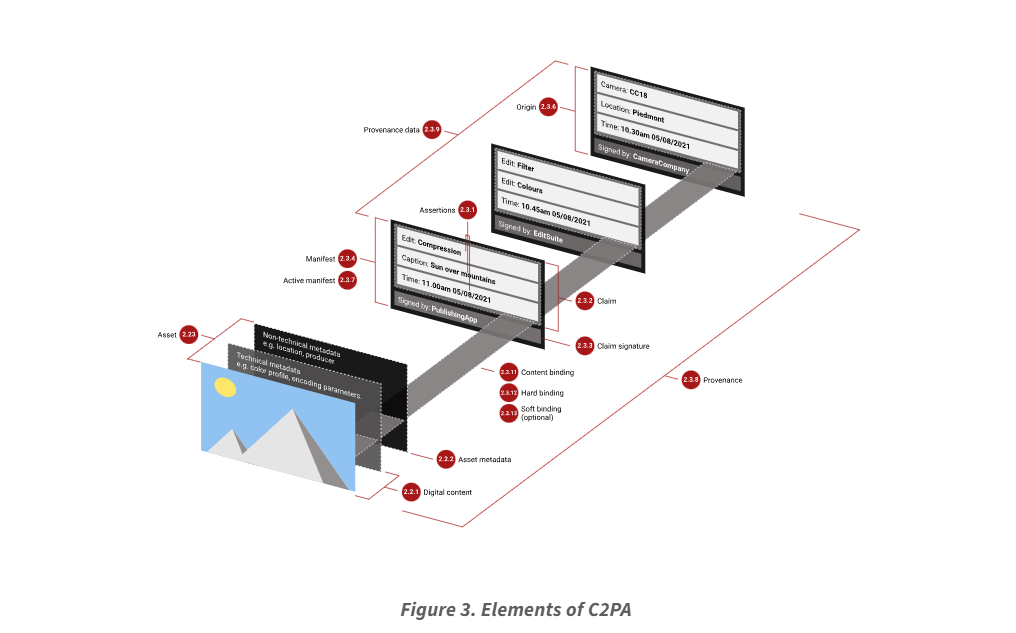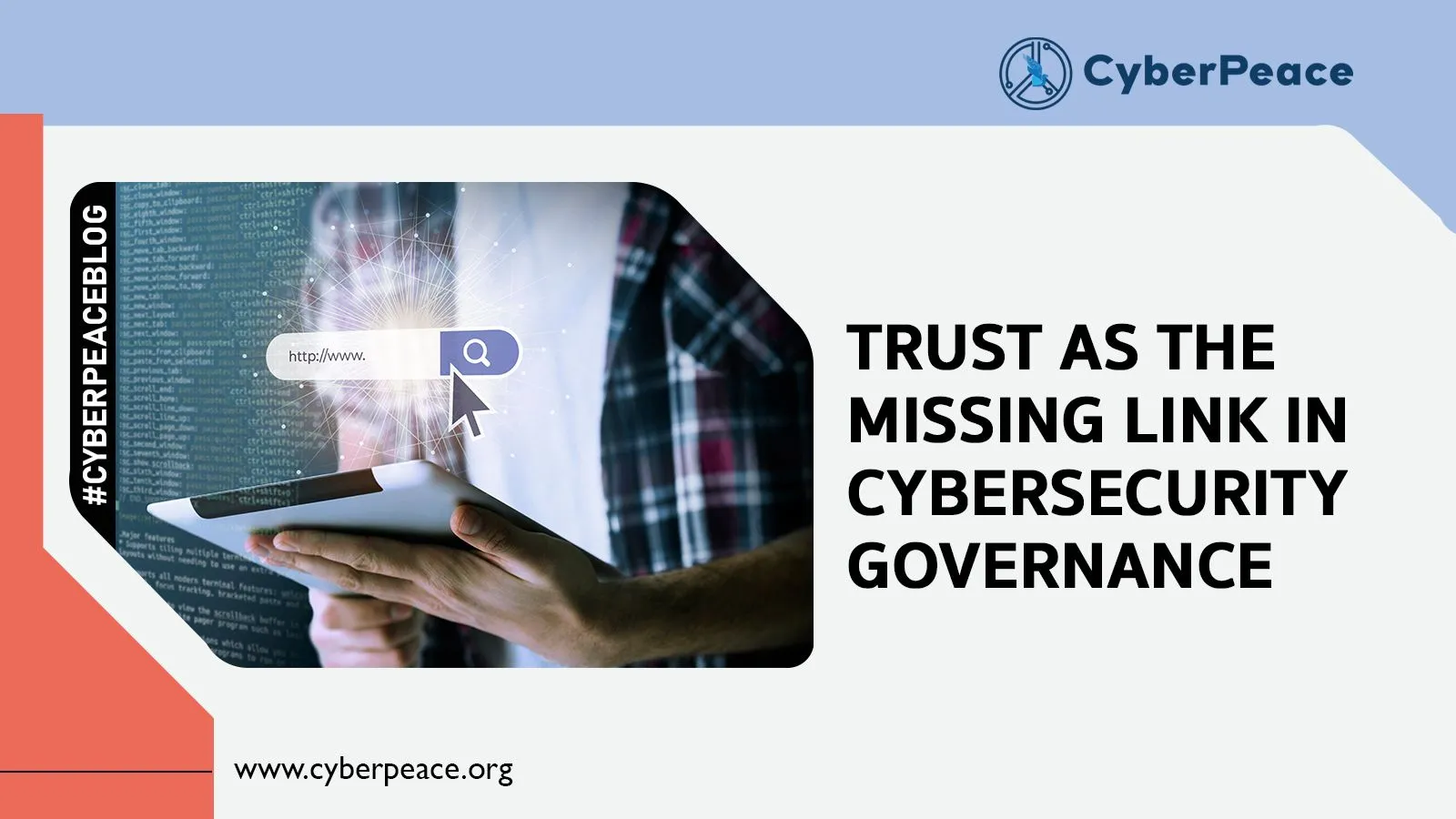C2PA: An International Standard for Media Provenance in India
Introduction
With the rise of AI deepfakes and manipulated media, it has become difficult for the average internet user to know what they can trust online. Synthetic media can have serious consequences, from virally spreading election disinformation or medical misinformation to serious consequences like revenge porn and financial fraud. Recently, a Pune man lost ₹43 lakh when he invested money based on a deepfake video of Infosys founder Narayana Murthy. In another case, that of Babydoll Archi, a woman from Assam had her likeness deepfaked by an ex-boyfriend to create revenge porn.
Image or video manipulation used to leave observable traces. Online sources may advise examining the edges of objects in the image, checking for inconsistent patterns, lighting differences, observing the lip movements of the speaker in a video or counting the number of fingers on a person’s hand. Unfortunately, as the technology improves, such folk advice might not always help users identify synthetic and manipulated media.
The Coalition for Content Provenance and Authenticity (C2PA)
One interesting project in the area of trust-building under these circumstances has been the Coalition for Content Provenance and Authenticity (C2PA). Started in 2019 by Adobe and Microsoft, C2PA is a collaboration between major players in AI, social media, journalism, and photography, among others. It set out to create a standard for publishers of digital media to prove the authenticity of digital media and track changes as they occur.
When photos and videos are captured, they generally store metadata like the date and time of capture, the location, the device it was taken on, etc. C2PA developed a standard for sharing and checking the validity of this metadata, and adding additional layers of metadata whenever a new user makes any edits. This creates a digital record of any and all changes made. Additionally, the original media is bundled with this metadata. This makes it easy to verify the source of the image and check if the edits change the meaning or impact of the media. This standard allows different validation software, content publishers and content creation tools to be interoperable in terms of maintaining and displaying proof of authenticity.

The standard is intended to be used on an opt-in basis and can be likened to a nutrition label for digital media. Importantly, it does not limit the creativity of fledgling photo editors or generative AI enthusiasts; it simply provides consumers with more information about the media they come across.
Could C2PA be Useful in an Indian Context?
The World Economic Forum’s Global Risk Report 2024, identifies India as a significant hotspot for misinformation. The recent AI Regulation report by MeitY indicates an interest in tools for watermarking AI-based synthetic content for ease of detecting and tracking harmful outcomes. Perhaps C2PA can be useful in this regard as it takes a holistic approach to tracking media manipulation, even in cases where AI is not the medium.
Currently, 26 India-based organisations like the Times of India or Truefy AI have signed up to the Content Authenticity Initiative (CAI), a community that contributes to the development and adoption of tools and standards like C2PA. However, people are increasingly using social media sites like WhatsApp and Instagram as sources of information, both of which are owned by Meta and have not yet implemented the standard in their products.
India also has low digital literacy rates and low resistance to misinformation. Part of the challenge would be showing people how to read this nutrition label, to empower people to make better decisions online. As such, C2PA is just one part of an online trust-building strategy. It is crucial that education around digital literacy and policy around organisational adoption of the standard are also part of the strategy.
The standard is also not foolproof. Current iterations may still struggle when presented with screenshots of digital media and other non-technical digital manipulation. Linking media to their creator may also put journalists and whistleblowers at risk. Actual use in context will show us more about how to improve future versions of digital provenance tools, though these improvements are not guarantees of a safer internet.
The largest advantage of C2PA adoption would be the democratisation of fact-checking infrastructure. Since media is shared at a significantly faster rate than it can be verified by professionals, putting the verification tools in the hands of people makes the process a lot more scalable. It empowers citizen journalists and leaves a public trail for any media consumer to look into.
Conclusion
From basic colour filters to make a scene more engaging, to removing a crowd from a social media post, to editing together videos of a politician to make it sound like they are singing a song, we are so accustomed to seeing the media we consume be altered in some way. The C2PA is just one way to bring transparency to how media is altered. It is not a one-stop solution, but it is a viable starting point for creating a fairer and democratic internet and increasing trust online. While there are risks to its adoption, it is promising to see that organisations across different sectors are collaborating on this project to be more transparent about the media we consume.
References
- https://c2pa.org/
- https://contentauthenticity.org/
- https://indianexpress.com/article/technology/tech-news-technology/kate-middleton-9-signs-edited-photo-9211799/
- https://photography.tutsplus.com/articles/fakes-frauds-and-forgeries-how-to-detect-image-manipulation--cms-22230
- https://www.media.mit.edu/projects/detect-fakes/overview/
- https://www.youtube.com/watch?v=qO0WvudbO04&pp=0gcJCbAJAYcqIYzv
- https://www3.weforum.org/docs/WEF_The_Global_Risks_Report_2024.pdf
- https://indianexpress.com/article/technology/tech-news-technology/ai-law-may-not-prescribe-penal-consequences-for-violations-9457780/
- https://thesecretariat.in/article/meity-s-ai-regulation-report-ambitious-but-no-concrete-solutions
- https://www.ndtv.com/lifestyle/assam-what-babydoll-archi-viral-fame-says-about-india-porn-problem-8878689
- https://www.meity.gov.in/static/uploads/2024/02/9f6e99572739a3024c9cdaec53a0a0ef.pdf





